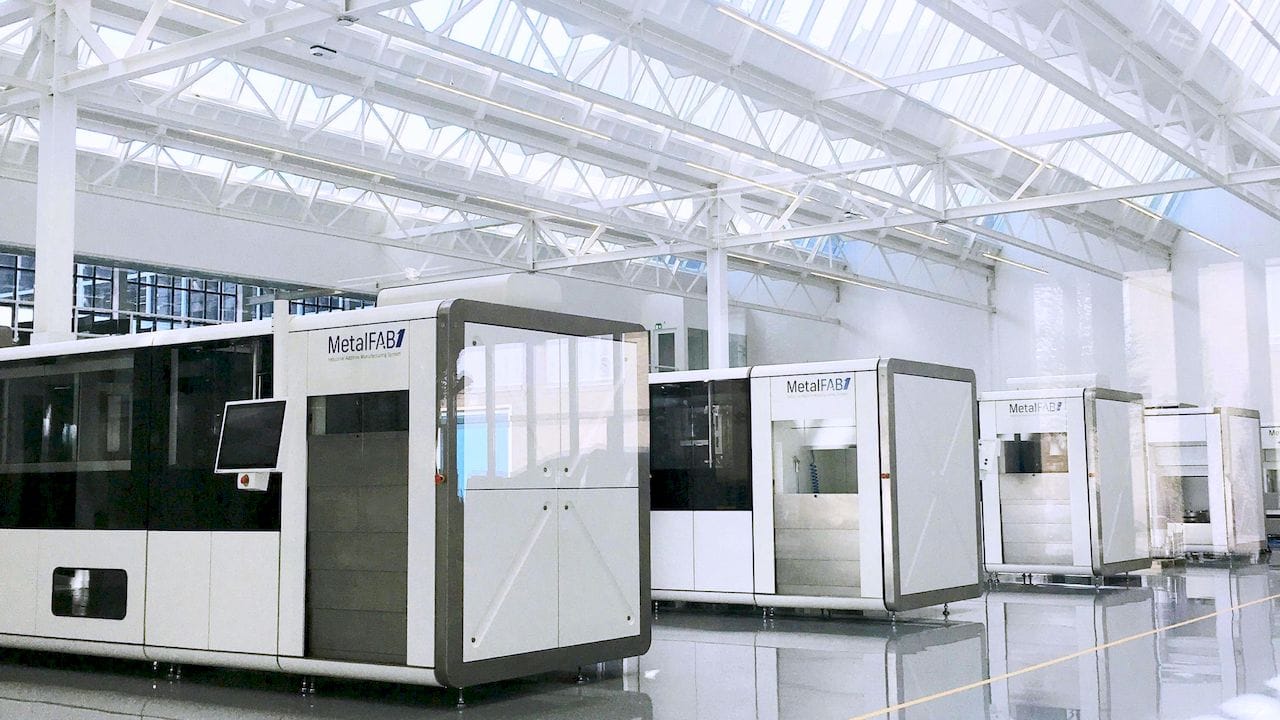![Multiple MetalFAB1 metal 3D printing systems [Source: Additive Industries']](https://fabbaloo.com/wp-content/uploads/2020/05/image-asset_img_5eb09150982a5.jpg)
Additive Industries announced a rather large sale of their MetalFAB1 machine.
The Netherlands-based company apparently sold SIX huge MetalFAB1 systems to a single client, one that already owned four units. This means this particular client will own and operate ten MetalFAB1 units and, according to Additive Industries, expects to buy even more.
Who is this mysterious client that needs to 3D print so many metal objects? Additive Industries isn’t saying much, other than that it is a “prestigious aerospace company located in California”. I took a peek through Google Earth in a vain attempt to identify the building in the image provided by Additive Industries to guess which company, to no avail. It may not even be the actual site involved.
This sale is quite interesting because it shows two important things.
First, this client is demonstrating an extreme level of confidence in Additive Industries and their product. One does not invest this level of cash unless you’re pretty certain the equipment is going to work out for you. In this case the dollar value is likely in the 8-digit range. That’s pretty big.
The customer more than likely had a very good experience with their prior equipment and is scaling up.
The second important thing to observe here is that this quantity of machines is significant. Were this a service bureau, one could understand the need for multiple machines: the bureau likely has a series of clients and the total amount of work requires that many machines.
But this is not the case here. ”Prestigious aerospace company located in California” is definitely not a service bureau, and is a manufacturer. And you don’t buy TEN machines to do prototyping.
You buy them for production.
This mysterious customer intends to use these metal 3D printing systems for production. They’re likely making aircraft or rocket parts in significant quantities. (Perhaps this is Boeing?)
These observations demonstrate that Additive Industries is likely correct when they say their machines are well-suited for production: They have at least one big client using them for that purpose.
I’m not surprised, given our experience with this still-young company. They spent considerable time developing their system in conjunction with actual clients to arrive at a very practical configuration. The “secret sauce” of the MetalFAB1 is that it is actually a series of configurable modules that each implement one step in the overall production process.
The 3D printing step is only one of several needed to arrive at a complete part. Additive Industries recognized this early on and designed their systems to optimize that workflow, beyond the “printer” itself. I think that is one of the most attractive features of their system.
And apparently a “prestigious aerospace company located in California” thinks so, too.











Aerosint and Aconity have proven out their work in multi-metal powder deposition 3D printing.